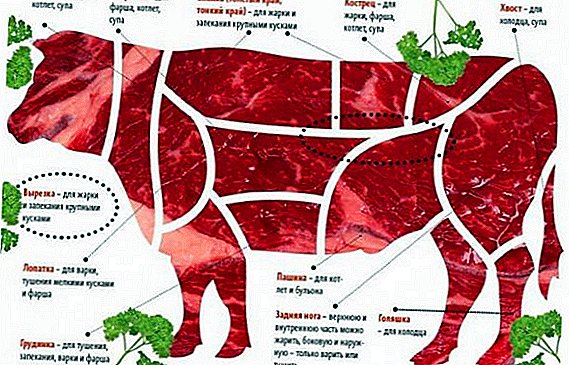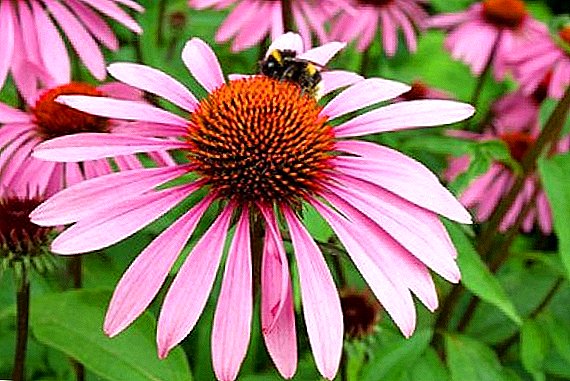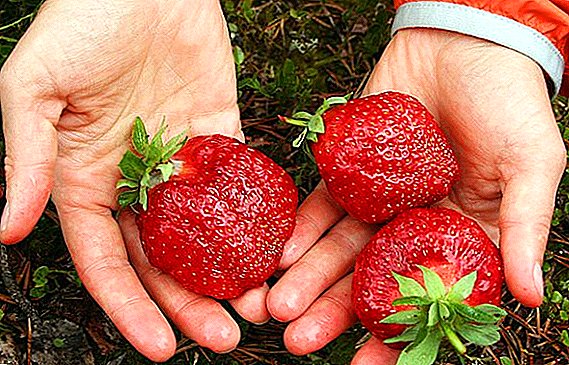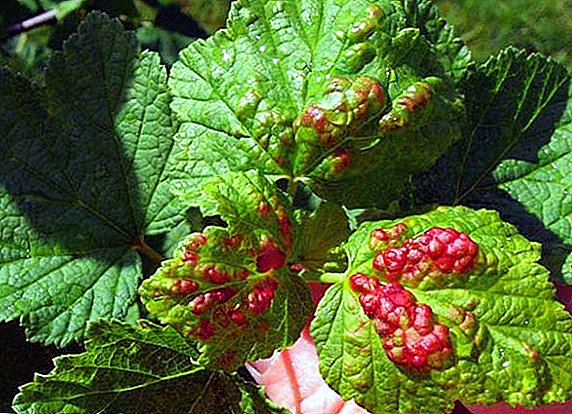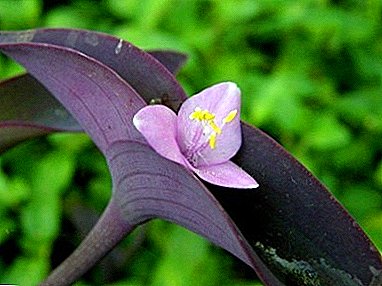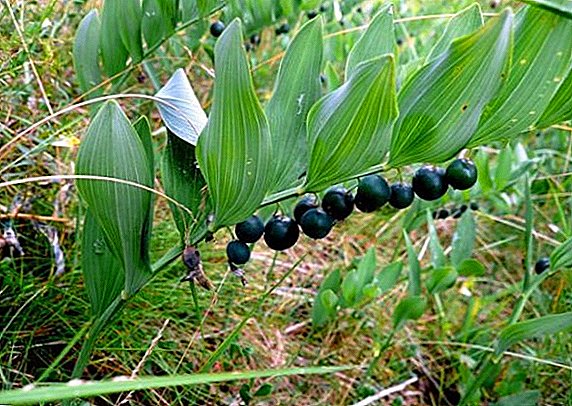 Having grown a cupola at least once on your plot, having appreciated how harmoniously it looks in flower arrangements, you are unlikely to give up this perennial. The advantage of it gives minimal care. It is enough to bring compost or leaf humus when planting in the ground so that all the remaining vegetation time just admire the plant, watering as needed. However, it is worth deciding in advance on which of the varieties to choose, since they are different in color and in the decorative nature of the green part of the plant. Next, we will talk about the most popular types of kupeny that are grown in our strip.
Having grown a cupola at least once on your plot, having appreciated how harmoniously it looks in flower arrangements, you are unlikely to give up this perennial. The advantage of it gives minimal care. It is enough to bring compost or leaf humus when planting in the ground so that all the remaining vegetation time just admire the plant, watering as needed. However, it is worth deciding in advance on which of the varieties to choose, since they are different in color and in the decorative nature of the green part of the plant. Next, we will talk about the most popular types of kupeny that are grown in our strip.
Nude naked
The habitat of this variety is the forests of the Caucasus. You can find it in the thick of the forest, and on the edges, among shrubs up to the middle mountain belt. It has a thick rhizome in the form of a rosary, from which grows a long, up to 60 cm, faceted stem. In the basal part, it has a slightly reddish color, but the rest is green. Almost alternate leaves grow alternately on it. They are located on both sides of the leaf cutting and reach 6 cm in width and 15 cm in length. From below they are bare and gray, and from above green (closer to the base they have a red tint).  On bare green stalks grows to two flowers. Perianth has up to 2.5 cm in length, bell-shaped and white in color. As a rule, in the middle it is slightly convex, has bent lanceolate greenish teeth. Stamens protrude from perianth, pistil longer than them. Flowers appear in late spring or early summer. At the end of flowering in their place are dark blue berries.
On bare green stalks grows to two flowers. Perianth has up to 2.5 cm in length, bell-shaped and white in color. As a rule, in the middle it is slightly convex, has bent lanceolate greenish teeth. Stamens protrude from perianth, pistil longer than them. Flowers appear in late spring or early summer. At the end of flowering in their place are dark blue berries.
Did you know? Not so long ago, the kupena took its place among the family of lilies, but recently it was decided to attribute it to the family of lily of the valley. From here one more its name - a garden lily of the valley. The Latin name, Polygonatum, is sparse. Translated, it means "perennial." In the people, the kupenu is often called the Solomon seal. The fact is that after the annual withering away of the shoots on the rhizome of the plant, there remains a round-shaped depressed scar, indeed, resembling a seal. By the number of such seals, you can determine the age of the shrub.
Fragrant kupena (medicinal)
Most often, a medicinal bucket is grown, which has a white border on green leaves. They grow up to 14 cm in length and 5 cm in width. Kupena grows up to 50 cm and is considered medium layer. The upper part of the stem is not so much bent compared to other species. Gives white flowers that grow in pairs. They appear in late spring or early summer. At the end of flowering leaves dark blue berries.  It grows wild in forest glades, on the slopes of small hills and mountains, in shady forests. Most often found in Japan, Mongolia, China, Siberia, the Mediterranean part of Europe and the Far East. Easily tolerates drought. Cultivated fragrant kupena since 1561.
It grows wild in forest glades, on the slopes of small hills and mountains, in shady forests. Most often found in Japan, Mongolia, China, Siberia, the Mediterranean part of Europe and the Far East. Easily tolerates drought. Cultivated fragrant kupena since 1561.
Caucasian kupena
The bare and faceted stem of this plant is 30 cm long. It has oblong lanceolate leaves that taper towards the base. On their lower side are visible veins, covered with short hairs. The leaves grow to 4.5 cm wide and 11 cm long. Flowers grow in two or four on bare pedicels. White perianth slightly above the base narrows, and then expands. Flowering time - April - May.  Caucasian kupena is an inhabitant of the mountain forests of Western Transcaucasia, Dagestan, Ciscaucasia, where spruce, fir, shrub, deciduous trees grow. You can find it in the subalpine zones, found in Asia Minor and the Balkan Peninsula.
Caucasian kupena is an inhabitant of the mountain forests of Western Transcaucasia, Dagestan, Ciscaucasia, where spruce, fir, shrub, deciduous trees grow. You can find it in the subalpine zones, found in Asia Minor and the Balkan Peninsula.
Did you know? The medicinal properties of the plant, which possesses not only its grass, but also rhizomes, are known. So, the leaves are applied to the wounds to stop the blood and reduce inflammation. When bruises are recommended poultices from the decoction. It is also used in inflammation of the lungs and upper respiratory tract, bronchitis, arthritis, gout, osteochondrosis, heart disease, headache, ulcer. For these purposes, you can prepare alcohol tincture of the root, dug in the fall.
Kupena many-flowered
This variety also loves shady and mixed forests, especially shrubs. Many-flowered kupna grows mainly in the middle and lower mountain belts of the Caucasus, the Himalayas, Europe, the Anterior, Minor and East Asia.  The flower has an oblique stem that extends to 90 cm in length, the leaves are formed from small, pointed oval-lanceolate leaves, alternately arranged on both sides of the leaf petiole. Below they have a gray-green shade. Grow up to 4.5 cm in width and 15 cm in length. In the axils of the leaves grows from 2 to 5 flowers with a white tubular perianth. It has teeth pubescent and bent at the ends. The flowering period is a month, the beginning of flowering is May-June. It has several hybrid forms that are distinguished by green bracts, striped leaves, and pink double flowers. Also known as kupen pharmacy, since it has been used for medicinal purposes since the mid-15th century.
The flower has an oblique stem that extends to 90 cm in length, the leaves are formed from small, pointed oval-lanceolate leaves, alternately arranged on both sides of the leaf petiole. Below they have a gray-green shade. Grow up to 4.5 cm in width and 15 cm in length. In the axils of the leaves grows from 2 to 5 flowers with a white tubular perianth. It has teeth pubescent and bent at the ends. The flowering period is a month, the beginning of flowering is May-June. It has several hybrid forms that are distinguished by green bracts, striped leaves, and pink double flowers. Also known as kupen pharmacy, since it has been used for medicinal purposes since the mid-15th century.
Important! Having decided to grow a cupola in your garden, place the bush in a place where children cannot reach it. The fact is that all parts of the plant contain toxic substances that lead to severe vomiting. And the berries of the plant look particularly attractive.
Kupena squat (low)
 An unusual cultivar gives upright, faceted, bare stems that form a compact shrub up to 20 cm in length. In this case, the growth for the year gives a very small plant - up to 5 cm. The leaves of the plant are ovate or lanceolate oblong, pubescent underneath, arranged alternately. Flowers appear in June and hold about two weeks. It is a single white perianth up to 2.2 cm in length, with stamens protruding from the tube and an even longer pistil. The berries are dark blue.
An unusual cultivar gives upright, faceted, bare stems that form a compact shrub up to 20 cm in length. In this case, the growth for the year gives a very small plant - up to 5 cm. The leaves of the plant are ovate or lanceolate oblong, pubescent underneath, arranged alternately. Flowers appear in June and hold about two weeks. It is a single white perianth up to 2.2 cm in length, with stamens protruding from the tube and an even longer pistil. The berries are dark blue.
Squat kupena grows in the south of Siberia, in Primorye, on Sakhalin, Urup, Iturup, Kunashir. You can also meet in Japan, Korea, China. Likes well-drained soil: bush thickets, plains, shores of the seas, mountain slopes.
Koupena is plentiful -
This variety prefers deciduous, fir and spruce forests, where it can be found among the bushes and on the edges. A little less often the variety appears on meadows in subalpine and mid-mountainous zones of Asia Minor, the Balkans, the Caucasus and the Crimea. Prefers moderately moist soils with moderate shading. Perennial cold-resistant, resistant to diseases and pests.
It has a thick root in the form of a rosary, which produces a bare, faceted stem of green color. In length, it stretches up to 50 cm and bends noticeably. The leaves of the plant are alternately arranged on two sides of the stem. They have an elongated lanceolate form, grow up to 5 cm in width and 9 cm in length. From the bottom of the leaves along the veins is papillary pubescence.  Pedicels are also naked and green, holding from 2 to 5 small flowers. The plant has a white tubular with constriction perianth without bract. It has pubescent teeth, which are strongly bent to the sides. From the perianth stand stamens, also pubescent. Pistil less stamens. Flowering begins in mid-spring or early summer. Upon its completion dark blue berries are formed.
Pedicels are also naked and green, holding from 2 to 5 small flowers. The plant has a white tubular with constriction perianth without bract. It has pubescent teeth, which are strongly bent to the sides. From the perianth stand stamens, also pubescent. Pistil less stamens. Flowering begins in mid-spring or early summer. Upon its completion dark blue berries are formed.
Kupena is hollow
Another variety whose natural habitat is the Caucasus mountain forests.
Narrow-leaved kupena
The variety is very similar to the whitewash. Only it has no pubescence on the lower surface of the leaf, and the leaves themselves are noticeably narrower and more pointed. Another feature is round, not faceted. The internodes closer to the top become shorter. Pedicels grow from the axils of the leaves and produce 2-3 hanging flowers. They appear closer to the end of spring or the beginning of summer. After flowering, a black berry appears in their place.  It grows in the coastal zone and in North China. It is possible to find this species among the bushes, in the meadows, the sandy territory of the river floodplain.
It grows in the coastal zone and in North China. It is possible to find this species among the bushes, in the meadows, the sandy territory of the river floodplain.
Siberian kupena
Siberian bathing can be found in northern China, northern Mongolia and Eastern Siberia. She prefers to grow in cold-temperate and warm-temperate zones.
It is characterized by a thick cord-like rhizome, from which a grainy stem grows up to 55 cm in length. Linear or lanceolate leaves grow in verticils, 0.5 cm wide and up to 8 cm long. At the end have a curl, and the bottom surface is bare. On bare green stalks there are two flowers with membranous bracts, which are preserved during flowering. The white tubular perianth is crowned with bent narrow lanceolate greenish teeth with light pubescence. It grows to 0.9 cm in length. Stamens with bare, knobby filaments do not protrude beyond. The pestle also does not look out, as it is shorter than the stamens. Flowering begins at the end of spring, and after its completion a red berry is formed. 
Important! Growing kupene practically does not require effort. It is undemanding to the soil, tolerates strong shading and excessive moisture, has little susceptibility to diseases, and is practically of no interest to pests. Is that in very dry periods a few caterpillars or slugs will settle on it. In one place it can grow constantly, it multiplies by dividing the bush.
Pink crown
This type of plant is well known in Northwestern China, Tien Shan, Pamir-Alai, Southwestern Siberia. It mainly grows in mountainous deciduous or spruce forests, among shrubs.
 It features a straight reddish-green stalk, which extends to 50 cm in height. The leaves are linear-lanceolate or simply lanceolate arranged in verticils of 4-6 pieces, but the lower ones can be opposite. Grow up to 2 cm in width and 15 cm in length. Bottom have a bluish shade, and along the veins - slight pubescence. In the axils of the leaves, flowers form mainly 2 each, but not more than 4. They have membranous falling bracts, tubular perianth pink shade. On it are bent lanceolate narrow teeth. Flowering begins in May - June. When it ends, a red berry appears at the site of the flowers that are tied.
It features a straight reddish-green stalk, which extends to 50 cm in height. The leaves are linear-lanceolate or simply lanceolate arranged in verticils of 4-6 pieces, but the lower ones can be opposite. Grow up to 2 cm in width and 15 cm in length. Bottom have a bluish shade, and along the veins - slight pubescence. In the axils of the leaves, flowers form mainly 2 each, but not more than 4. They have membranous falling bracts, tubular perianth pink shade. On it are bent lanceolate narrow teeth. Flowering begins in May - June. When it ends, a red berry appears at the site of the flowers that are tied.
Broadleaf kupena
Broad-leaved flower variety comes from the forests of Asia Minor, Central Europe, and the European part of Russia. Broadlea kupena grows in height up to 50 cm. On slightly faceted stems, pointed, oblong leaves of ovate form. In their sinuses at the end of May appears from 1 to 4 drooping flowers with a white tubular perianth. 20-25 days after the appearance, the flower fades and a black-blue berry forms in its place.
 The plant prefers sufficiently unfavorable conditions for other flowers: dense soil, strong shading. But at the same time it grows rapidly into dense thickets that grow from year to year. The broadleaf Kupena is considered the most drought tolerant variety of this species, therefore it is suitable for the driest soils.
The plant prefers sufficiently unfavorable conditions for other flowers: dense soil, strong shading. But at the same time it grows rapidly into dense thickets that grow from year to year. The broadleaf Kupena is considered the most drought tolerant variety of this species, therefore it is suitable for the driest soils.
Kupena is a beautiful plant that will decorate your garden not only with unusual flowers, but also with decorative leaves. At the end of flowering, the garden will benefit from the appearance of beautiful red, black or dark blue berries. You can grow a flower on the most barren soils, not too worried about caring for him. Even pests and diseases seldom overtake him. The only thing to remember is that all parts of the plant contain toxic substances.



